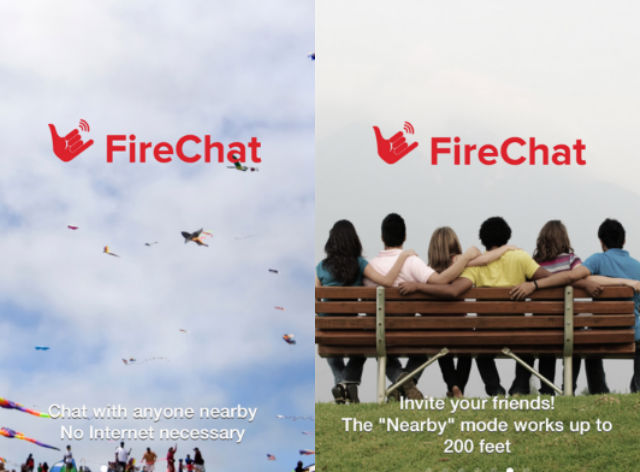WATCH: Tom Clark takes a look at how Hong Kong protesters are staying connected and staying ahead of the government with FireChat

Each new civil uprising seems to bring about the adoption of a social network that wasn’t necessarily designed for organizing mass demonstration. Hong Kong’s so-called Occupy Central protest is no exception.
Twitter was in its heyday during the Arab Spring, BlackBerry Messenger and its secure network were the communication tool of choice in the 2011 London riots, and Quora — a crowdsourced question and answer app — became the go-to social media site for Turkey’s Gezi Park protesters to spread word about what was happening in Istanbul.
READ MORE: Hong Kong protests: Key issues and people in the dispute
In Hong Kong, the social media site uniting pro-democracy protesters rallying against Chinese government plans to screen candidates for the city’s first-ever election of a city leader, is FireChat.
FireChat allows users to send group messages (and organize pro-democracy rallies, in the case of Hong Kong) without having cell service.

Tech website GigaOm gave the example of the app being used at off-the-grid festivals such as Burning Man, which takes place in the Black Rock Desert in Nevada.
“You can’t send private messages, but you can create a public chat room and invite your friends to it, using it to coordinate and communicate when texts and WhatsApps won’t go through,” GigaOm wrote in August.
It was prominent student protester Joshua Wong who first encouraged demonstrators to turn to FireChat, in a post on his Facebook page, Gizmodo reported.
The Guardian reported Tuesday FireChat has previously been used in protests in Iran, Iraq and Taiwan. But it’s Hong Kong’s unprecedented civil uprising that has brought about a surge in FireChat sign-ups — at least 100,000 in just 24 hours after Wong’s post and more than 800,000 chat sessions.
READ MORE: How can citizens circumvent a Twitter ban?
With FireChat, you can only communicate with other users in close proximity using Bluetooth, the wireless technology that uses radio waves to allow device-to-device connections without cellphone or Wi-Fi connections.
It’s the same technology that allows drivers to use their cellphones hands-free with a wireless headset.
According to the Bluetooth website, information is transmitted up to 100 metres away, referred to as a Personal Area Network or PAN. FireChat users create “mesh” networks, linking their devices to one another and to an Internet connection that a single device in the network is connected to.
It also makes it difficult for opponents of a protest — say, a government putting restrictions on Internet access — to control communications.
“Mesh networks are like Voldemort after he split his soul into horcruxes (only not evil). Destroying one part won’t kill it unless you destroy each point of access; someone would have to turn off Bluetooth on every phone using FireChat to completely break the connection,” Gizmodo explained, referencing the almost invincible Harry Potter villain.
READ MORE: Hong Kong democracy activists issue civil disobedience manual
The Chinese government may not be able to control FireChat the same way as other social networks (it shut down access to Instagram this week), but there have reportedly been attempts to dupe demonstrators using social media.
The South China Morning Post (SCMP) reported Sept. 17 about a malware app that appeared online, attributed to a pro-democracy group called Code4HK.
The group said it had nothing to do with the application that was circulated with the message: “Check out this Android app designed by Code4HK for the coordination of Occupy Central!”
According to SCMP, the app requested access to user information— including browsing and call histories, contact lists, text messages and location — after being downloaded.
It wasn’t clear who was behind the application.



Comments